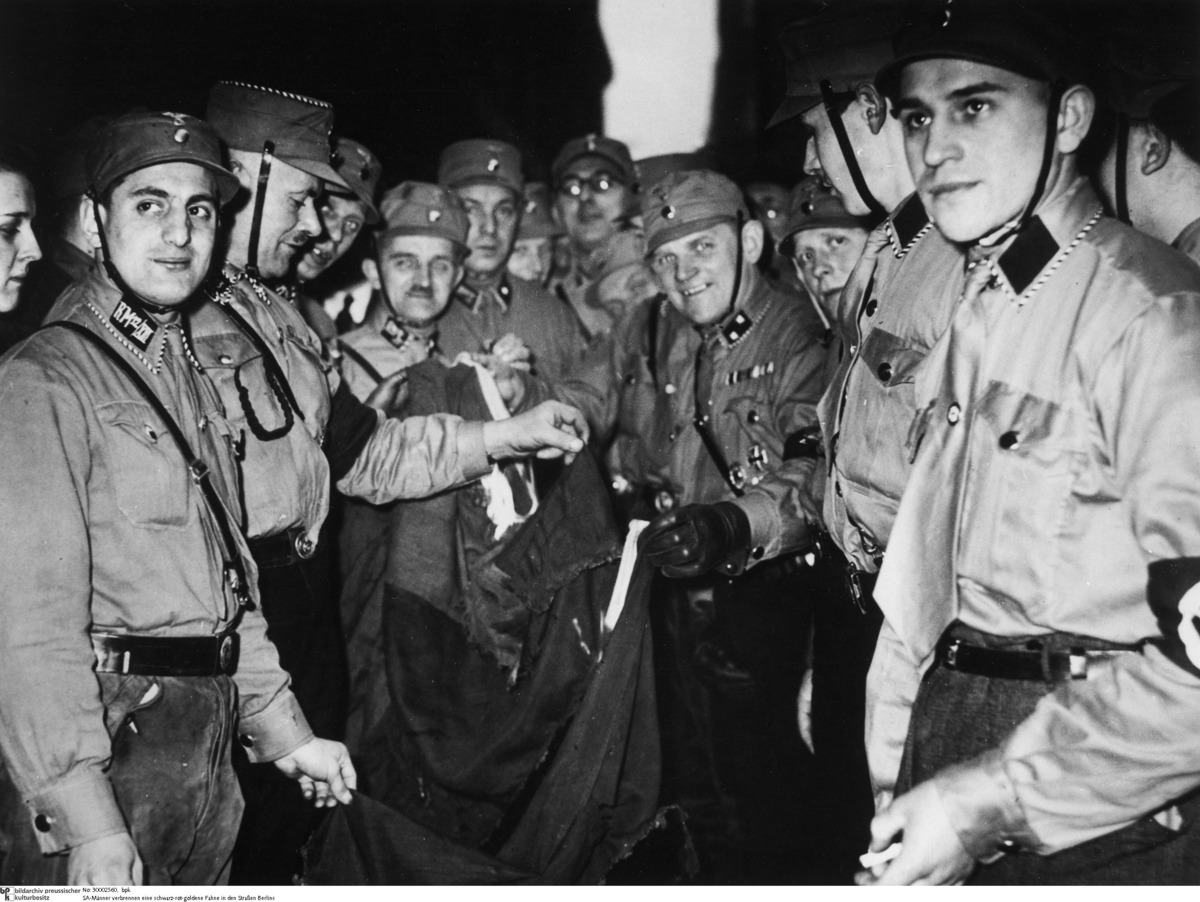Abstract
In January 1933, many Germans had no reason to suspect that the new
cabinet under Hitler would prove successful, since the period from May
1928 to November 1932 had seen four dissolutions of the Reichstag and
just as many cabinet changes. But Hitler viewed the chancellorship as
the first step toward the construction of a dictatorship and prophesied
that he would hold the office for the rest of his life. On the evening
of January 30, 1933, and in the days that followed, the National
Socialists marked the dawning of a new era by staging enormous victory
parades in Berlin and other cities. The parades drew thousands of
members of the SA [Sturmabteilung or
Storm Detachment, also known as Brownshirts], the SS
[Schutzstaffel or Protection
Squadrons], and the Steel Helmet
[Stahlhelm] veterans’ organization,
who celebrated their triumphant victory alongside enthusiastic
civilians. Particularly impressive was the show that Goebbels organized
in the capital. An estimated 60,000 people participated in an hours-long
torchlight parade through the government quarter, and the event
reverberated in press and radio reports throughout the country. There
were other direct indications that Hitler’s government would not be of
the usual kind. In Berlin and other cities, Nazi supporters burned
black, red, and gold flags—the symbol of the hated Weimar Republic—and
engaged in street battles with Communists and other political
opponents.
